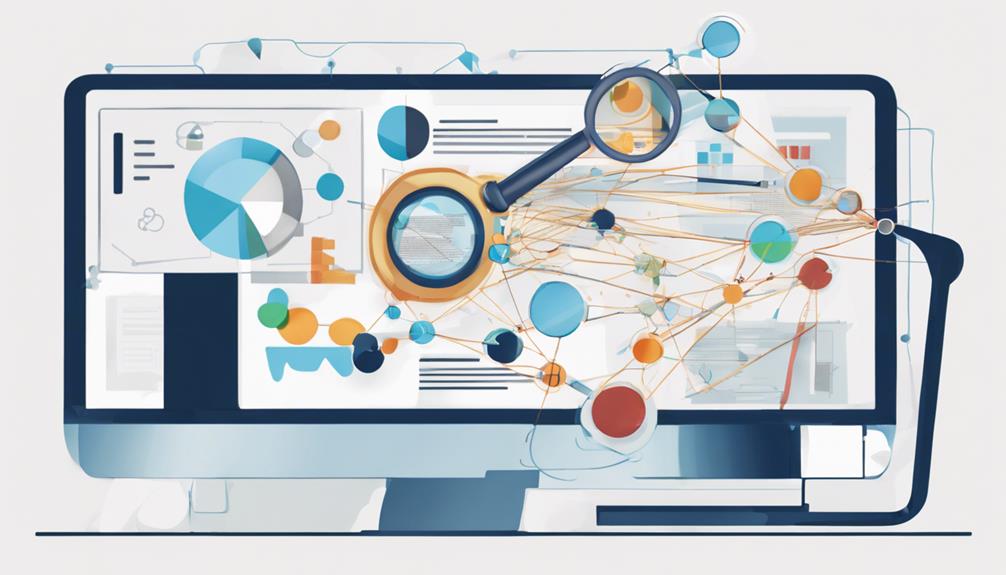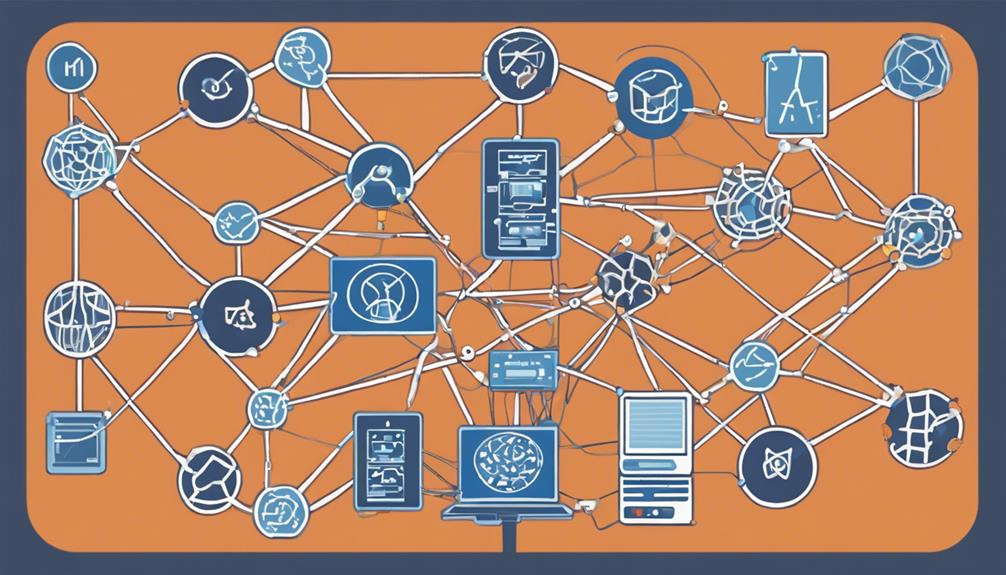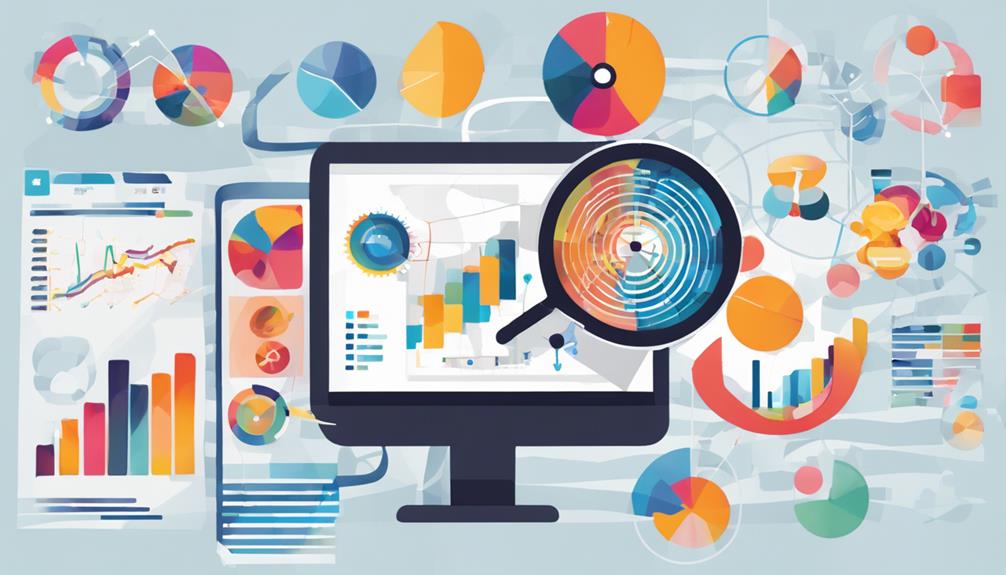When it comes to navigating the realm of data analysis, you might find yourself pondering the difference between data mining and web data mining. The subtle yet crucial disparities lie in the intricacies of data sources, structures, processing, analysis, and visualization. So, how do these variations impact the insights you can extract and the decisions you can make based on the data? Let’s unravel the distinctions between these two methodologies and explore their unique applications in the ever-evolving landscape of data analytics.
Data Source
When comparing data mining and web data mining, one key aspect to consider is the source of data. In data mining, data extraction and data cleaning are crucial initial steps. Data is typically sourced from various databases and repositories, requiring meticulous cleaning to ensure accuracy and reliability in subsequent analysis. Following this, data integration plays a vital role in merging data from disparate sources into a unified format for analysis. This integrated data is then stored in databases or data warehouses for easy access and retrieval during the mining process.
On the other hand, web data mining involves extracting data from web sources like websites, social media platforms, and online forums. The data extracted from these sources undergoes similar cleaning processes to eliminate inconsistencies and errors. Data integration in web data mining focuses on combining data from multiple web sources to create a comprehensive dataset for analysis. The integrated data is then stored in web servers or cloud platforms for efficient mining and analysis. Understanding the differences in data extraction, cleaning, integration, and storage between data mining and web data mining is essential for successful analytical outcomes.
Data Structure
To understand the distinction between data mining and web data mining concerning data structure, it is imperative to delve into how the organization and format of data differ in these two realms. Data structure plays a crucial role in both fields. In traditional data mining, data is often organized using a hierarchical structure, where information is stored in a tree-like format with parent-child relationships. This allows for easy navigation and categorization of data. On the other hand, web data mining deals with data organized in a network structure. Here, data points are interconnected, forming a graph structure that represents complex relationships between various entities on the web.
The hierarchical structure in data mining aids in organizing data into meaningful categories, making it easier to analyze and extract insights. In contrast, the network structure used in web data mining captures the intricate connections and dependencies present in web data, enabling the discovery of patterns and trends that may not be apparent in traditional data structures. Understanding these differences in data structure is essential for effectively utilizing data mining techniques in different domains.
Data Processing
In the realm of data mining and web data mining, the process of data processing is a fundamental aspect that drives the extraction of valuable insights from vast amounts of information. Data processing techniques play a crucial role in converting raw data into a structured format that can be easily analyzed. Various data processing tools, such as ETL (Extract, Transform, Load) tools and data preprocessing software, are used to clean, transform, and organize data before analysis.
Data processing techniques involve tasks like data cleaning, where inconsistencies and errors are corrected, data transformation, where data is converted into a suitable format for analysis, and data integration, where different datasets are combined to provide a holistic view. These techniques ensure that the data is accurate, complete, and formatted correctly for further analysis.
Effective utilization of data processing tools streamlines the overall data analysis process, enabling organizations to uncover meaningful patterns, trends, and relationships within their data. By employing efficient data processing techniques and tools, businesses can make informed decisions based on reliable and well-organized data.
Data Analysis
Data analysis, a pivotal stage in the realm of data mining and web data mining, involves the systematic examination of data sets to uncover valuable insights and patterns. This process often includes predictive modeling and statistical analysis to forecast trends and behaviors based on existing data. Through machine learning techniques and pattern recognition, data analysts can identify correlations, anomalies, and dependencies within the data.
Statistical analysis plays a crucial role in data analysis by utilizing mathematical algorithms to extract meaningful information from datasets. This involves applying various statistical methods to interpret the data and make informed decisions. Predictive modeling, on the other hand, focuses on creating models that predict future outcomes based on historical data patterns.
Machine learning algorithms are frequently used in data analysis to automate the process of identifying patterns and making predictions. These algorithms improve over time as they are exposed to more data, enhancing the accuracy of the analysis. Pattern recognition, a subset of machine learning, enables the system to recognize patterns and regularities in data, aiding in decision-making processes.
Data Visualization
Moving from the realm of data analysis to data visualization, you shift your focus to presenting data in graphical or visual formats for easier interpretation and understanding. Data visualization involves creating interactive dashboards and infographic designs to communicate insights effectively. Interactive dashboards allow you to interact with the data dynamically, enabling you to drill down into specific details and customize the view based on your requirements. On the other hand, infographic design combines data and visuals to convey complex information in a clear and engaging manner, making it easier for you to grasp key findings at a glance. By utilizing data visualization techniques, you can uncover patterns, trends, and correlations that might not be immediately apparent in raw data. This visual representation of data not only enhances your understanding but also aids in decision-making processes by presenting information in a visually compelling way.
Frequently Asked Questions
Can Data Mining Be Used for Predictive Analytics?
Yes, data mining can be utilized for predictive analytics. By leveraging machine learning algorithms, data mining sifts through vast datasets to uncover patterns and trends, enabling accurate predictions based on historical data.
How Does Web Data Mining Ensure Data Privacy?
To ensure data privacy with web data mining, you must prioritize user consent. By obtaining explicit permission from users before collecting their data, you can uphold their privacy rights and maintain trust in your data mining practices.
What Are the Ethical Considerations in Data Mining?
When considering data mining, ethical implications are crucial. Privacy concerns must be addressed to uphold integrity. Balancing innovation with respect for individual rights is key. Transparency and accountability are essential in navigating these complex issues.
Is Web Data Mining More Complex Than Traditional Data Mining?
Web data mining tends to involve higher data complexity due to the vast amount of unstructured data available online. This leads to increased algorithm complexity for processing, often requiring more sophisticated models to achieve accurate results.
How Does Data Mining Contribute to Business Decision-Making?
Data mining plays a crucial role in business decision-making by sifting through vast datasets to uncover patterns and trends. Through data analysis, you gain valuable business insights that help in making informed strategic choices for your organization.



